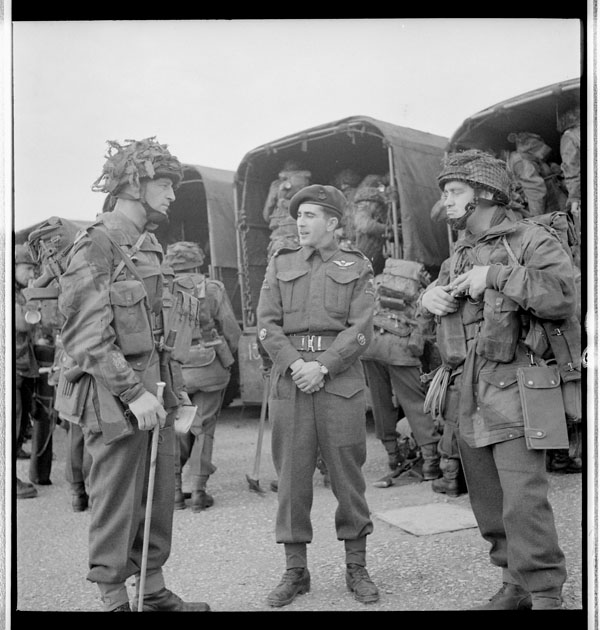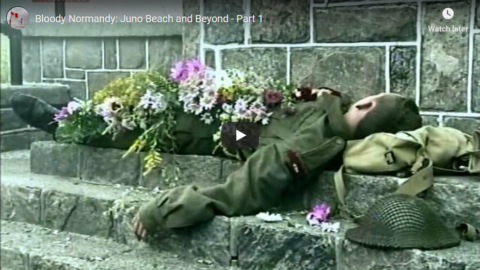KHHI Nepal
Published on 26 Mar 2018See how a scrap of steel is converted into a piece of mastery craft by our men @ duty. All bear hands, hard labor, years of experience and great skill. Pls enjoy it!!
Is the original 2016-17 British Gurkhas Issue issued to the new recruits as their training, exercise, utility and even as a combat knife.
Product link :
https://www.thekhukurihouse.com/2016-17-british-standard-issue-bsi-2-kukri#makingkhukuri #bsikukri #servicekukri #gurkhaknife
June 9, 2019
Making the legendary service Khukuri/Kukri of British Gurkhas – KHHI Nepal
QotD: What is economics?
Probably the most common definition is “the science of allocating scarce resources to diverse ends.” [Michael] Watts offers Marshall’s definition: The study of mankind in the ordinary business of life. Neither of those is what I think of as economics. Still less is it the study of the economy, which I suspect would come closest to what most people think the word means.
To me, economics is that approach to understanding behavior that starts from the assumption that individuals have objectives and tend to take the acts that best achieve them. That is what economists mean by “rationality,” and it is the assumption of rationality that is, in my view, the distinguishing characteristic of economics. What I am looking for are works that tell us something interesting about the implications of that assumption.
Someone at some point suggested Orwell’s Down and Out in Paris and London. It is an interesting book, although much too long for my purposes. But what makes it interesting, economically speaking, is not the vivid picture of poverty in the period between the wars but particular details relevant to implications of rational behavior.
I can give, by memory, an example. Orwell observed waiters in a fancy Paris restaurant, out of sight of the diners, spitting in the dishes they were going to serve. In an idealized market context, the waiter would never spit in the dish unless the value to him of doing so was more than the disvalue to the patron he was serving, which is unlikely. But throw in the inability of either the patrons or the waiter’s employers to monitor the waiter’s behavior and any benefit to the waiter of expressing his hostility is a sufficient incentive to make him do it. That suggests the further point that, when you cannot monitor someone’s behavior, his preferences matter — you want the job he is doing for you to be done by someone whose preferences are close enough to yours so that he will want to do what you would want him to do — even if nobody is watching.
Economics is not the study of the economy. A picture of poverty, or unemployment, or wealth, or economic growth, however accurate and vivid, does not in itself teach you any economics. A story such as Poul Anderson’s “Margin of Profit,” which deals with a wholly fictional future, does, because it demonstrates in that world an important implication of rationality that holds in our world as well — that in order to prevent someone from doing something you do not want him to do it is not necessary to make it impossible, merely unprofitable.
David Friedman, “Thoughts on Literature, Economics and Education”, Ideas, 2017-05-01.
June 8, 2019
The sad economics of recycling
Kim du Toit on the actual economic value of most recycling efforts:
Turns out that aluminum cans are actually worth recycling — in that they are 100% recyclable (requiring nothing other than melting and reformulating) and it costs less — much less — to recycle than to produce new aluminum.
That’s almost true of newsprint too, except that while pulping it is fine — hardly any energy is used for that — the pulp also has to be bleached, and in the pulping / bleaching process, about 15% of the original paper is lost. And as raw paper production (i.e. from logged wood) has become more efficient over the years, and as trees can be grown to replace those felled, the only real benefit from recycling paper is that overall paper production is less vulnerable to hiccups in supply of fresh wood — such as caused by forest fires, disease and drought.
And, he added, when it comes to recycling other stuff, glass is little better than plastic — which surprised me, but it actually costs much more to recycle glass than simply to produce it new. And the old “plastic into park benches” spiel is likewise stupid, because it costs so much to produce such stuff, and creates so much atmospheric pollution thereby, that it’s easier just to toss plastic into a properly-lined landfill and let nature take its course.
Knowing all that, I’ve always been skeptical of the benefits of recycling — it’s always been about feeewings rather than utility
Blue’s Top Five Domes!
Overly Sarcastic Productions
Published on 7 Jun 2019There are questions any self-respecting YouTube Historian must ask: “How do you balance entertainment and educational value?”, “What’s the split between your area of expertise and more foreign topics?”, and, of course, the most important of all: “Which Dome is the best dome?”
Today, Overly Sarcastic Productions takes a stand on this critical issue — and proceeds to shitpost about it.
PATREON: https://www.Patreon.com/OSP
OUR WEBSITE: https://www.OverlySarcasticProduction…
Find us on Twitter @OSPYouTube!
Differentiating between actual security and security theatre
Alistair Dabbs has a security tale of woe:

“Keypad Entry”by Victor Frost is licensed under CC BY-NC-SA 2.0
Access denied. Enter Access Code.That’s a good start. Just a few moments ago I was handed a card on which is written, in blue ballpoint, a newly compiled string of alphanumerics that is supposed to identify me as a unique user. Oh well, maybe I fumbled the buttons. Let’s try again.
Access denied. Enter Access Code.I am standing in the driving rain – this is London in the summer – in front of a large electronically operated vehicle barrier that keeps the riff-raff from getting anywhere near the car park and loading bay behind the building where I am to be working this week.
The vertical stainless steel keypad into which I am pushing my access code is weather-resistant. I am not. You’d think they could have installed the keypad at car-window level but no, it’s at lorry level. And it’s not on the driver’s side anyway, so anyone not rolling up in an unmodified US or continental import vehicle is forced to exit and walk over to the access terminal.
Access denied. Enter Access Code.As far as it is concerned, I am riff-raff. I look behind me to see a steel-grey car has pulled up behind mine. Steel-grey = bland, unimaginative, company car, must be management. As I trudge back towards the street entrance around the corner to ask the security desk for an alternative access code, remembering this time to express an explicit preference for one that actually provides access, I notice the driver in the grey car has started to harrumph.
Security systems like this exist to protect me and my possessions, whether physical or electronic. They keep out the nasties and foil the mischievous. They allow access to the honest and prevent it to the unauthorised.
They are a pain in the arse.
Security is essential, of course, but only for other people. Not me. I’m the nice guy here and this sodding keypad is stopping me from getting in.
But then security authentication is one of those functions whose philosophical concept is hampered by self-contradictory details of its own design. To pick a topical example, it is the right of European Union citizens to enjoy free movement between EU countries without being stopped by border controls. However, how can the border controls know whether you are an EU citizen or not unless they stop you to ask for your EU identification? So it’s only by presenting your passport or ID card that you can exercise your right not to have to present your passport or ID card.
The forces of law and order, from police to night club bouncers, face the same recursive logic. Why do they insist on frisking me? Why can’t they concentrate their stop and search efforts only on those who are carrying concealed weapons?
Tank Chats #48 Centaur Dozer | The Funnies | The Tank Museum
The Tank Museum
Published on 9 Mar 2018A Centaur tank converted into a dozer, part of the Tank Chat Funnies specials. The design had been worked out by 79th Armoured Division in Belgium in autumn 1944. In early 1945, the first conversions were issued to 87th Assault Dozer Squadron, 6th Assault Regiment Royal Engineers; a few saw action in Germany. Some were deployed during the Korean War and the intervention around the Suez Canal in 1956.
Support the work of The Tank Museum on Patreon: ► https://www.patreon.com/tankmuseum
Or donate http://tankmuseum.org/support-us/donateVisit The Tank Museum SHOP: ►https://tankmuseumshop.org/
Twitter: ► https://twitter.com/TankMuseum
Tiger Tank Blog: ► http://blog.tiger-tank.com/
Tank 100 First World War Centenary Blog: ► http://tank100.com/ #tankmuseum #tanks
QotD: Labour’s celebration at Thatcher’s death
A few hours after Margaret Thatcher’s death on Monday, the snarling deadbeats of the British underclass were gleefully rampaging through the streets of Brixton in South London, scaling the marquee of the local fleapit and hanging a banner announcing “THE BITCH IS DEAD”. Amazingly, they managed to spell all four words correctly. By Friday, “Ding Dong! The Witch Is Dead”, from The Wizard of Oz, was the Number One download at Amazon UK.
Mrs Thatcher would have enjoyed all this. Her former speechwriter John O’Sullivan recalls how, some years after leaving office, she arrived to address a small group at an English seaside resort to be greeted by enraged lefties chanting “Thatcher Thatcher Thatcher! Fascist fascist fascist!” She turned to her aide and cooed, “Oh, doesn’t it make you feel nostalgic?” She was said to be delighted to hear that a concession stand at last year’s Trades Union Congress was doing a brisk business in “Thatcher Death Party Packs” – almost a quarter-century after her departure from office.
Of course, it would have been asking too much of Britain’s torpid left to rouse themselves to do anything more than sing a few songs and smash a few windows. In The Wizard of Oz, the witch is struck down at the height of her powers by Dorothy’s shack descending from Kansas to relieve the Munchkins of their torments. By comparison, Britain’s Moochkins were unable to bring the house down: Mrs Thatcher died in her bed at the Ritz at a grand old age. Useless as they are, British socialists were at one point capable of writing their own anti-Thatcher singalongs rather than lazily appropriating Judy Garland blockbusters from MGM’s back catalogue. I recall in the late Eighties being at the National Theatre in London and watching the crowd go wild over Adrian Mitchell’s showstopper, “F**k-Off Friday”, a song about union workers getting their redundancy notices at the end of the week, culminating with the lines:
I can’t wait for That great day when F**k-Off Friday
Comes to Number Ten.You should have heard the cheers.
Mark Steyn, “The Uncowardly Lioness”, SteynOnline.com, 2019-05-05.
June 7, 2019
“A Ghost in the Trenches” – Francis Pegahmagabow – Sabaton History 018 [Official]
Sabaton History
Published on 6 Jun 2019As a ghost he roamed the trenches, effectively taking out his enemies one by one. He was the deadliest sniper of The Great War, with over 300 confirmed kills on his name. He is Canadian soldier Francis Pegahmagabow, born in an indigenous First Nations family, and the The Sabaton Song “A Ghost in the Trenches” is about his life and adventures.
Support Sabaton History on Patreon (and possibly get a History Channel special edition): https://www.patreon.com/sabatonhistory
Pre-order The Great War here: https://www.sabaton.net/pre-order-of-…
Check out the trailer for Sabaton’s new album The Great War right here: https://www.youtube.com/watch?v=HCZP1…
Watch more videos on the Sabaton YouTube channel: https://www.youtube.com/user/Sabaton?…
Listen to Sabaton on Spotify: http://smarturl.it/SabatonSpotify
Official Sabaton Merchandise Shop: http://bit.ly/SabatonOfficialShopHosted by: Indy Neidell
Written by: Markus Linke and Indy Neidell
Directed by: Astrid Deinhard and Wieke Kapteijns
Produced by: Pär Sundström, Astrid Deinhard and Spartacus Olsson
Creative Producer: Joram Appel
Executive Producers: Pär Sundström, Joakim Broden, Tomas Sunmo, Indy Neidell, Astrid Deinhard, and Spartacus Olsson
Maps by: Eastory
Edited by: Iryna Dulka
Sound Editing by: Marek KaminskiArchive by: Reuters/Screenocean https://www.screenocean.com
Music by Sabaton.Sources:
– IWM: Q 454, Q 17730, Q 50690, IWM 255, IWM 778, Q 17780, Q 745, IWM 466, IWM 208, Q 53538, E(AUS) 1497, E (AUS) 4677, E(AUS) 2078, Q 70213, Q 5977, Q 108213, Q 50553, Q 53637, Q 2638, Q 65444, Q 11668, Q 79508, Q 23706, Q 88121, Q 50638, IWM 207, Q 4135, Q 80267, Q 29027
– National Library of Scotland (NLS)
– Library and Archives Canada: Canadians advancing east of Arras.
– Auckland War Memorial Museum: AM 2016.26.1-3
– Canadian War Museum: George Metcalf Archival Collection, CWM 19940003-459, CWM 19920085-006, CWM 19920085-595, CWM 19920085-018, CWM 19940003-370, CWM 20040035-006An OnLion Entertainment GmbH and Raging Beaver Publishing AB co-Production.
© Raging Beaver Publishing AB, 2019 – all rights reserved.
From the comments:
Sabaton History
1 day ago
Many of you have been analysing the tracklist for the upcoming Sabaton Album The Great War. While the subjects of some of the songs are quite easy to guess, the exact topic of “A Ghost in the Trenches” was a mystery for many – although some did predict it correctly. The song is about the Canadian (and indigenous First Nations) soldier Francis Pegahmagabow, the deadliest sniper of the First World War. Indy – having researched and hosted the The Great War YouTube channel for the duration of the war, knows as much as there is to know about the subject, and is the most suitable person to tell you the story behind the song.Enjoy and Cheers!
The almost-forgotten 1st Canadian Parachute Battalion on D-Day
Colby Cosh reminds us that Canadian troops landed in Normandy in at least one other location than on Juno Beach:

From left to right, Regimental Sergeant-Major “Knobby” Clark, Company Sergeant-Major Norbert Joseph and Company Sergeant-Major Outhwaite of the 1st Canadian Parachute Battalion getting ready to leave Carter Barracks for their D-Day transit camp, May 1944.
Canada. Dept. of National Defence / Library and Archives Canada / e002852749
Col. C.P. Stacey’s 1946 history of 1st Canadian Parachute Battalion in Normandy describes the expectations of high command chillingly. For the purposes of the invasion, the Canadians operated as a component of the British 6th Airborne Division, assigned to blow up bridges, seize crossroads and establish advance observation posts deep in enemy territory. The War Office estimated, Stacey wrote, “that the wastage for the first month would be at the double intense rate, i.e., 50 per cent of War Establishment for officers and 40 per cent for other ranks.”
With regard to the Canadian airborne, this accounting proved largely accurate: 541 men from the battalion left England to be dropped into the battle of Normandy, the enumerated casualties for June 6 alone were two “presumed killed,” 18 dead, six wounded, and 81 taken prisoner. The unit lost no more to capture after the first day, but by June 17, when the battalion was removed from the front line for the first time, the other categories had swelled to 48 killed and 113 wounded. Stacey’s calculation of the actual “wastage” rate is that it was 59 per cent for officers and 39 per cent for other ranks.
If you have read about the paras, it is perhaps not the casualty figures that strike you so much as the unique Gothic horror of their particular experience of D-Day. The Americans’ use of parachute attacks in Sicily had taught planners that putting soldiers right on the intended drop zone never went as well as in training. Pilots who were comfortable flying slow and at suitable height over Fort Benning inevitably found themselves less cool over enemy terrain dotted with anti-aircraft guns and small arms.
In some cases evasive manoeuvres flung the airborne infantry out of the hatch without warning. Meanwhile, flat areas that had looked like green fields in photos turned out to be algae-covered swamps, some intentionally flooded by the Germans. Anyone who had volunteered for the paratroops in the hope of avoiding drowning could be in for a dreadful surprise. The historian Dan Hartigan, son of a 1st Battalion vet of the same name, describes a close shave for Sgt. W.R. Kelly, later killed in the Battle of the Bulge. “One man found Sergeant Kelly hanging upside down with his head in the water, from a huge deadwood tree. … The canopy had caught on a limb and suspended Kelly so he was submerged from the top of his head to his neck.” Kelly was rescued by a nearby comrade, but some soldiers in similar predicaments dropped alone and were not so lucky. In darkness and confusion, others landed badly, broke limbs, and were out of action at once.
Bren Gun at the Range
Forgotten Weapons
Published on 23 Aug 2011We take a 1940 Bren gun to the range to demonstrate function, disassembly, and shooting from a variety of positions. For more information, check out http://www.ForgottenWeapons.com .
QotD: Ruling France
From the French Revolution in 1789 to the ascension of Charles de Gaulle in 1958, France had an absolute monarchy, three constitutional monarchies, a directory, a consulate, two empires with one restoration, four republics, two provisional governments, a government in exile, and the hobnailed jackboot of Nazi occupation: 17 distinct regimes in 169 years.
De Gaulle, with his Fifth Republic, appeared to have settled the ancient argument between the monarchists and the republicans by creating a monarchy and calling it a republic. But the presidents of that republic — de Gaulle, Pompidou, Giscard d’Estaing, Mitterand, Chirac, Sarkozy, Hollande — have been a downward sequence. Each was at least slightly, and sometimes sharply, less talented than his predecessor.
In 2017, in utter exasperation, France embraced a 39-year old former banker and senior financial civil servant who had no more sought elective office than had Donald Trump before running for president, Emmanuel Macron. He achieved the office not by gaining control of a political party; French political parties are very fluid and rise and disappear and change their names every few years, but by standing as an independent and setting up a new party of rank political amateurs as legislators. It was magnificent in the country of Jean-Jacques Rousseau and other triumphant theorists. It ran on a euphoric platform: a green revolution, lower taxes, a better social benefit system, completed unification of Europe, stronger armed forces, everything that was desirable and the quick elimination of all that was not.
The predictable happened and Macron is now diminished by the incoherent rioting every weekend of mobs of angry bourgeois crabbing about taxes, reinforced by outright hooligans, all wearing the silly yellow vests all French drivers are required to have in their automobiles so they can put them on to signify an emergency. It is that splendid French combination of the perfect goal and the absurd result.
Conrad Black, “What’s the Matter With Europe?”, New English Review, 2019-05-06.
June 6, 2019
New paper on minimum wage effects is bound to be mis-used
In the Washington Examiner, Tim Worstall explains why a new well-researched paper on the minimum wage will be misunderstood and then used to “prove” things it doesn’t actually say:
None of this changes the standard intuition that when there’s a heavy such bite then there will be ill effects. What it does do is then lead us to trying to calculate what is a wage that does have that snarl, that bite? What is a minimum wage that is “too high” in the sense of having an excess of those ill effects upon employment? This is where I predict — no, not fear, not posit, nor surmise, but predict — this paper will be misused.
Our thinking is that the effects come from the relationship between the minimum and median wages. If we insist that wages cannot be lower than more than we already pay half the people, then we really are going to have problems. A minimum wage of 100% of the median wage isn’t going to work, that is. That ratio is called the Kaitz Index. This paper shows us that there are few to no such bad things happening up to 0.59 on that Kaitz measure. We can have the minimum wage at 59% of the median wage and know that we’ll have the good effects and only trivial amounts, at worst, of the bad.
You can see what’s going to happen next, can’t you? The Economic Policy Institute tells us that the median wage is about $22 this year, and 59% of that is $13. A bit of rounding and some aspiration, and why not go for a $15 minimum wage?
Except there are two median wages. Part-time and seasonal wages tend to be lower than full-year and full-time ones. The Economic Policy Institute is using that higher full-time one. The one for all jobs is quite a bit lower, $18.58 per hour. Take 59% of that and you get a rather lower level of $10.95 an hour. That’s around and about what McDonald’s, Walmart, and similar establishments pay as entry-level wages, which does seem about right, doesn’t it?
So, the new research paper, from esteemed researchers, published in the world’s top English language economics journal, tells us that minimum wages up to a certain level cause few to no problems. They’ve shown this for up to 59% of median wages. But which median do they mean? Dube himself told me they mean that lower one — specifically, the “median wage of all workers, not just for full time.”
But we all know how this is going to be used, don’t we? As proof that $15 an hour won’t cause any problems — which isn’t what the paper shows at all. Rather, it says that a $10.95 an hour minimum wage shouldn’t cause any problems of note.
The new paper is good empirical work. The fault is in what people will argue it says, not what it does.
On D-Day what did the Germans know?
Military History Visualized
Published on 28 May 2019When it comes to D-Day and the German perspective there are a few bits out there, but the sources are sometimes lacking. So, for this, we will be looking at some proper sources namely, the situation report of Operations Staff of the Wehrmacht and the war diary of the 7th German Army.
Cover design by vonKickass.
»» SUPPORT MHV ««
» paypal donation – https://paypal.me/mhvis
» patreon – https://www.patreon.com/mhv» SOURCES «
Mehner, Kurt (Hrsg.): Die geheimen Tagesberichte der Deutschen Wehrmachtführung im Zweiten Weltkrieg 1939-1945. Band 10: 1. März 1944 – 31. August 1944, Biblio Verlag: Osnabrück, 1985.
Schramm, Percy E.: (Hrsg.): Kriegstagebuch des OKW 1944-1945. Teilband I. Eine Dokumentation. Bechtermünz: 2005.
Lieb, Peter: Unternehmen Overlord. Die Invasion in der Normandie und die Befreiung Westeuropas. C.H. Beck: München, 2014.
Horst Boog, Gerhard Krebs, Detlef Vogel: Das Deutsche Reich und der Zweite Weltkrieg. Band 7. Das Deutsche Reich in der Defensive – Strategischer Luftkrieg in Europa, Krieg im Westen und in Ostasien 1943 bis 1944/45, Deutsche Verlags-Anstalt, Stuttgart 2001.
Germany and the Second World War. Volume 7. The Strategic Air War in Europe and the War in the West and East Asia 1943–1944/5. 2006.
Citino, Robert M.: The Wehrmacht’s Last Stand. The German Campaigns of 1944-1945. University Press of Kansas: USA, 2017.
Fennell, Jonathan: Fighting the People’s War. The British and Commonwealth Armies and the Second World War. Cambridge University Press: Cambridge, UK, 2019
Harrison, Gordon A.: Cross-Channel Attack. United States army in World War II. Center of Military History, United States Army, Washington D.C., 1993
Blumenson, Martin: Breakout and Pursuit. United States army in World War II. Center of Military History, United States Army, Washington D.C., 1993
Messenger, Charles: The D-Day Atlas. Anatomy of the Normandy Campaign, Thames & Hudson: London, 2014 (2004).
Penrose, Jane (ed.): The D-Day Companion. Leading Historians explore history’s greatest amphibious assault. Osprey Publishing: Oxford 2009 (2004).
Töppel, Roman: Kursk 1943. The Greatest Battle of the Second World War. Helion: Warwick, UK: 2018.
Document for June 6th: D-day statement to soldiers, sailor, and airmen of the Allied Expeditionary Force, 6/44 https://www.archives.gov/global-pages…
The Invasion of France, June 6, 1944, House of Commons https://winstonchurchill.org/resource…
iTunes is dead – “There will be no funeral, because it had no friends”
I use iTunes because I have to, not because I particularly want to. Apparently that’s not uncommon among iPhone users:
iTunes, Apple’s Frankenstein’s monster of an MP3-player-cum-record store-cum-video-store-cum-iPhone-updater-cum-random-task-performer, a piece of software which opens on your computer whenever it wants and which seems to require you to download an updated version every eight hours, was pronounced dead on Monday. It was 19 years old. There will be no funeral, because it had no friends.
Apple CEO Tim Cook announced that in its future operating systems, iTunes will be replaced by three separate programs: One for music (Apple Music), one for podcasts (Apple Podcasts) and one for video (Apple TV). Updating your phone — which never had anything to do with music, podcasts or video — will now be a function of the operating system. This sounds promising. It sounds normal.
But the mystery remains how Apple, of all companies, found itself sullying its machines for so long with iTunes’ wretched presence. By the end iTunes wasn’t just bad, it was fascinatingly bad — a “toxic hellstew,” as programmer Marco Arment put it in 2015. It was a master class in bad user experience from a company whose brand is excellent user experience: Put your trust in Apple’s machines and its native apps and everything will just work. There are no viruses, no blue screens of death, no pre-installed junkware popping up all over your brand-new desktop. Things just show up where they’re supposed to be. Mac’s user interface is so vastly superior to Windows’ that it seems ridiculous even to compare them. They’re both operating systems in the sense that the stick-shift on a Yugo and the flappy paddles on a Ferrari are both transmissions. Yet by 2015 one of Apple’s essential apps wasn’t just horrid to look at and baffling to use — it couldn’t even store and play people’s MP3s properly.
I never experienced the horror stories myself; [lucky bastard!] the idea of buying music from Apple and, because of its aggressive digital rights management, not even getting an MP3 file with which I could do what I liked always struck me as daft. But the Internet is full of tales of woe from people who entrusted their music collections to Apple and got royally screwed. iTunes would make curatorial decisions all by itself: If you bought Neil Young’s 1977 compilation album Decade, but already had On the Beach in your library, it might just decide not to include Walk On and Tired Eyes on your version of Decade. Or it might delete them from On the Beach, depending on its mood.
This was presumptuous and annoying, but at least somewhat explicable: iTunes consumers were far more singles-focused than album-focused. (Indeed the app is widely credited with ending the “age of the album.”) Less explicable were reports of Apple Music replacing people’s legacy music collections — songs they had ripped from CDs and entrusted to iTunes — with new downloads. People spoke of entire collections being corrupted or lost overnight. People reported that their libraries looked nothing alike on their various Apple devices. At one point, apparently under the impression that not many people loathe U2, Apple famously went ahead and beamed one of the band’s new snorefests onto everyone’s iTunes without asking.
My experiences with iTunes have been mostly of the minor irritant variety: disappearing songs, paid-for tracks that refused to play on certain devices, and songs showing up in playlists that they don’t belong to, for example. But at least — most of the time — the non-Apple songs were not randomly deleted from my library. Not too often, anyway.
Bloody Normandy: Juno Beach and Beyond – Part 1
canmildoc
Published on 17 Sep 2011Part 1 of 5
Documentary “Stories from the Second World War: Bloody Normany”.
Juno or Juno Beach was one of five sectors of the Allied invasion of German-occupied France in the Normandy landings on 6 June 1944, during the Second World War. The sector spanned from Saint-Aubin, a village just east of the British Gold sector, to Courseulles, just west of the British Sword sector. The Juno landings were judged necessary to provide flanking support to the British drive on Caen from Sword, as well as to capture the German airfield at Carpiquet west of Caen. Taking Juno was the responsibility of the 3rd Canadian Infantry Division and commandos of the Royal Marines, with support from Naval Force J, the Juno contingent of the invasion fleet, including ships of the Royal Canadian Navy (RCN). The beach was defended by two battalions of the German 716th Infantry Division, with elements of the 21st Panzer Division held in reserve near Caen.
The invasion plan called for two brigades of the 3rd Canadian Division to land in two subsectors — Mike and Nan — focusing on Courseulles, Bernières, and Saint-Aubin. It was hoped that preliminary naval and air bombardment would soften up the beach defences and destroy coastal strongpoints. Close support on the beaches was to be provided by amphibious tanks of the 2nd Canadian Armoured Brigade. Once the landing zones were secured, the plan called for the 9th Canadian Infantry Brigade to land reserve battalions and deploy inland, the Royal Marine commandos to establish contact with the British 3rd Infantry Division on Sword, and the 7th Canadian Infantry Brigade to link up with the British 50th (Northumbrian) Infantry Division on Gold. The 3rd Canadian Division’s D-Day objectives were to capture Carpiquet Airfield and reach the Caen-Bayeux railway line by nightfall.
The landings initially encountered heavy resistance from the German 716th Division; the preliminary bombardment proved less effective than had been hoped, and rough weather forced the first wave to be delayed until 07:35. Several assault companies — notably those of the Royal Winnipeg Rifles and The Queen’s Own Rifles of Canada — took heavy casualties in the opening minutes of the first wave. Strength of numbers, as well as coordinated fire support from artillery and armoured squadrons, cleared most of the coastal defences within two hours of landing. The reserves of the 7th and 8th brigades began deploying at 08:30 (along with the Royal Marines), while the 9th Brigade began its deployment at 11:40.
The subsequent push inland towards Carpiquet and the Caen-Bayeux railway line achieved mixed results. The sheer numbers of men and vehicles on the beaches created lengthy delays between the landing of the 9th Brigade and the beginning of substantive attacks to the south. The 7th Brigade encountered heavy initial opposition before pushing south and making contact with the 50th Infantry Division at Creully. The 8th Brigade encountered heavy resistance from a battalion of the 716th at Tailleville, while the 9th Brigade deployed towards Carpiquet early in the evening. Resistance in Saint-Aubin prevented the Royal Marines from establishing contact with the British 3rd Division on Sword. When all operations on the Anglo-Canadian front were ordered to halt at 21:00, only one unit had reached its D-Day objective, but the 3rd Canadian Infantry Division had succeeded in pushing farther inland than any other landing force on D-Day. – http://en.wikipedia.org/wiki/Juno_beach














